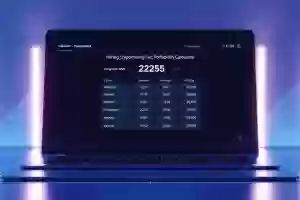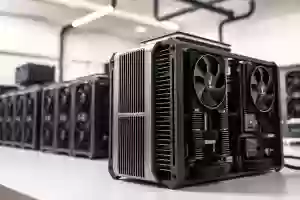How to Build a Mining Rig: A Step-by-Step Guide
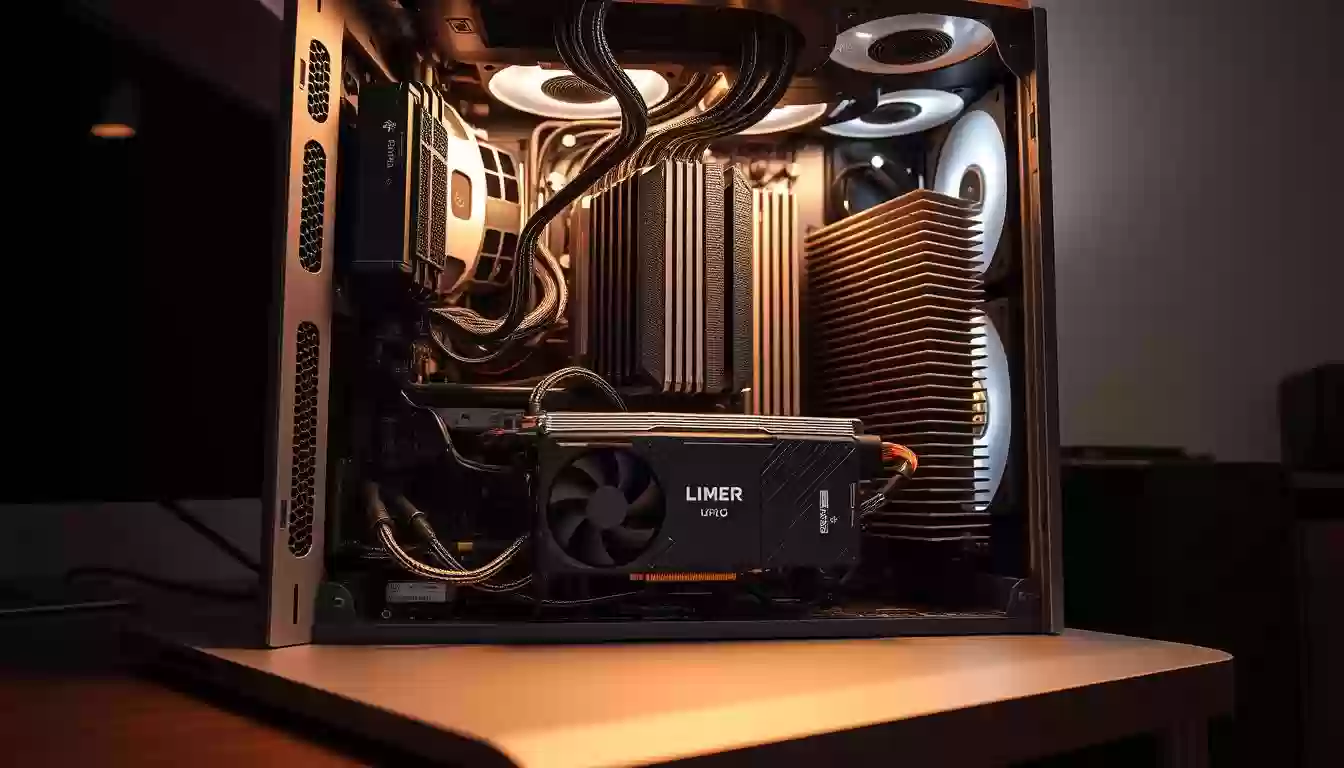 05 Mar 25
05 Mar 25
Building a mining rig can be an exciting venture, but it requires careful planning and knowledge. A mining rig is a specialized computer system designed to solve complex mathematical problems, enabling the validation of cryptocurrency transactions. While pre-built options exist, constructing your own rig offers customization and cost-effectiveness.
The process involves selecting the right hardware, such as GPUs, motherboards, and power supply units, and installing the appropriate mining software. It's important to consider factors like power consumption and efficiency to maximize profitability. Joining a mining pool can also enhance reward frequency, making the venture more rewarding for many users.
This guide provides a comprehensive overview, from initial planning to optimization, ensuring a smooth start for both newcomers and experienced miners. Updated with modern tips for 2024 and beyond, it helps you navigate the evolving landscape of cryptocurrency mining effectively.
Overview: What is Cryptocurrency Mining?
Cryptocurrency mining is the backbone of blockchain networks, enabling secure and decentralized transaction verification. It involves solving complex mathematical puzzles to validate transactions and add them to a public ledger. This process ensures the integrity and security of the network without relying on a central authority.
Definition and Key Concepts
Mining relies on proof-of-work, a consensus mechanism where miners compete to solve cryptographic puzzles. The first miner to solve a puzzle gets to add a new block of transactions to the blockchain, earning rewards in return. This mechanism is energy-intensive but ensures the network's security and immutability.
Understanding Mining Difficulty and Rewards
Mining difficulty adjusts dynamically based on network conditions, ensuring consistent block validation times. For example, Bitcoin adjusts its difficulty every 2,016 blocks. The reward structure, including halving events, controls coin supply. For instance, Bitcoin's block reward halves every four years, reducing inflation and increasing scarcity.
| Characteristic | Solo Mining | Pool Mining |
|---|---|---|
| Reward Frequency | Low, potentially long waits | Consistent payouts |
| Hardware Requirements | High-powered equipment | Varies, more flexible |
| Risk | Higher risk, less predictable | Shared risk, steadier returns |
Miners can choose between solo mining and pool mining. Solo mining offers potential high rewards but with low probability. Pool mining combines resources, offering more consistent, albeit shared, rewards. Understanding these dynamics is crucial for selecting the right mining approach.
For those new to cryptocurrency mining, it's essential to grasp these fundamentals before selecting hardware or joining a pool. Learn more about how mining secures blockchain networks and the role of miners in maintaining decentralized systems.
Choosing Your Cryptocurrency: Initial Considerations
Selecting the right cryptocurrency is the first critical step in building an efficient mining operation. Each cryptocurrency has unique requirements, and understanding these differences is key to maximizing your returns.
ASIC, GPU, and CPU Mining: What to Know
Bitcoin, for example, is optimized for Application-Specific Integrated Circuits (ASICs), which are designed solely for mining. In contrast, Ravencoin and Monero are tailored for GPU and CPU mining, respectively. This distinction is vital as it dictates the type of hardware you'll need.
| Hardware Type | Power Consumption | Profitability | Examples |
|---|---|---|---|
| ASIC | High | Specialized (e.g., Bitcoin) | Bitcoin, Litecoin |
| GPU | Medium | Flexible (e.g., Ravencoin) | Ravencoin, Ethereum Classic |
| CPU | Low | Niche (e.g., Monero) | Monero |
Research tools like Whattomine can help determine the most profitable cryptocurrency for your setup. Consider factors like competition levels and market trends to make informed decisions.
Planning Your Budget and Selecting Components
Creating a budget and choosing the right components are crucial steps in building an efficient mining setup. Understanding your financial limits helps you make informed decisions about hardware, ensuring a balance between performance and cost.
Exploring Low Budget Options
For those starting out, a low-budget setup can be both cost-effective and productive. Consider mid-range GPUs like the Nvidia GeForce GTX 1660 Super, which offers good performance without breaking the bank. Pair this with a budget-friendly CPU and a basic frame to keep costs down. Power consumption is a key factor here, so look for components with high efficiency.
A typical low-budget rig might include:
- GPU: Nvidia GeForce GTX 1660 Super (~$200)
- Power Supply: 300W PSU (~$50)
- Motherboard: Basic model with multiple PCIe slots (~$80)
Mid-Range to High-End Configurations
For those willing to invest more, mid-range and high-end configurations offer enhanced performance and scalability. A mid-range setup could feature an RTX 3060 Ti GPU, a 500W PSU, and a more robust motherboard. High-end builds might include top-tier GPUs like the RTX 3090, paired with a 1000W PSU and advanced cooling solutions.
Key components to consider:
- GPU: Nvidia RTX 3060 Ti (~$400)
- Power Supply: 850W PSU (~$200)
- Motherboard: High-quality model with multiple PCIe slots (~$250)
| Budget Level | Components | Cost Range |
|---|---|---|
| Low | Mid-range GPU, basic CPU, simple frame | $500-$800 |
| Mid-Range | High-performance GPU, quality PSU, robust motherboard | $1,200-$2,500 |
| High-End | Top-tier GPU, advanced cooling, high-wattage PSU | $3,000-$5,000 |
When planning your budget, consider both initial costs and ongoing expenses like electricity. Higher upfront investments can lead to greater efficiency and potentially higher rewards. Always weigh the trade-offs between cost and long-term profitability to make the best decision for your mining goals.
Mining Rig Setup Guide: Essential Hardware Components
Selecting the right hardware is crucial for a successful mining operation. Each component plays a vital role in ensuring efficiency and profitability. Let’s dive into the essential parts you’ll need to build a robust mining rig.
Motherboard, CPU, and RAM Selection
The motherboard is the backbone of your mining rig, connecting all components together. Look for a model with multiple PCIe slots to support several GPUs. A reliable CPU with low power consumption is ideal, as it handles the operating system and mining software. Pair this with sufficient RAM to ensure smooth operation.
GPUs, ASICs, Power Supply, and Cooling
GPUs are the workhorses for mining, offering flexibility across various cryptocurrencies. ASICs, while more efficient for specific coins like Bitcoin, are limited in versatility. A high-quality power supply unit (PSU) is essential to handle the power demands of your setup. Cooling systems, including fans or liquid cooling, prevent overheating and ensure longevity.
| Component | Recommended Specifications | Examples |
|---|---|---|
| GPU | At least 6GB VRAM for Ethereum | Nvidia GeForce RTX series |
| ASIC | Optimized for specific cryptocurrencies | Antminer series |
| PSU | High-wattage (850W or higher) | Corsair, EVGA models |
| Cooling | Additional fans or liquid systems | Noctua, NZXT solutions |
Connect your components using PCIe risers for stability and manage cables neatly for optimal airflow. Proper cooling solutions, like additional fans or liquid cooling, are vital to maintain temperatures and protect your hardware.
By carefully selecting each component and ensuring proper setup, you can create a powerful mining rig that maximizes your returns and operates efficiently.
Building Your Mining Rig: Step-by-Step Assembly
Assembling your mining rig is an exciting milestone. It requires attention to detail and a systematic approach to ensure everything works smoothly. Let’s break it down into manageable steps.
Preparing the Components
Start by unboxing and organizing all your components. Ground yourself to prevent static damage. Assemble the frame and mount the motherboard securely. Install the CPU by applying a thin layer of thermal paste and mounting the cooler. Add the RAM sticks to the appropriate slots.
Power Supply and Cables
Install the power supply unit (PSU) and connect the main power cable. Attach the PCIe risers to the motherboard and secure the GPUs, ensuring each has a dedicated power connection. For ASIC miners, unbox and connect to the network, setting up cooling fans for optimal airflow.
Final Checks
Verify all connections before powering on. Ensure the GPUs are firmly attached and the cables are neatly managed. Double-check the PSU capacity to handle the power load. Once everything is in place, you’re ready to power up and start mining.
Installing and Configuring Mining Software
Installing the right software is the final step before your mining journey begins. This process ensures your hardware works efficiently and connects to the blockchain network. Let’s break it down into manageable steps.
Setting Up the Operating System and Drivers
Choose an operating system optimized for mining, such as Hive OS or Windows 10. Install the OS and then add the necessary drivers for your GPU or ASIC. For example, Nvidia GPUs require the latest GeForce drivers, while AMD cards need Adrenalin drivers. Properly installed drivers ensure optimal performance and stability.
Connecting to a Mining Pool and Software Configuration
Next, install mining software like CGMiner or PhoenixMiner. These programs connect your hardware to a mining pool. Create a secure cryptocurrency wallet to receive rewards. Join a reputable pool, such as Slush Pool or F2Pool, and input your pool, worker, and wallet details. Use the pool’s dashboard to monitor performance and troubleshoot issues.
| Software | Features | Supported Hardware | Compatibility | User Interface |
|---|---|---|---|---|
| CGMiner | Advanced customization, remote monitoring | ASIC, GPU | Windows, Linux | Command-line |
| PhoenixMiner | High performance, user-friendly | GPU | Windows | GUI |
| Hive OS | Complete OS with built-in tools | ASIC, GPU | Linux-based | Web interface |
Regular software updates and monitoring are crucial for maintaining performance. Ensure your setup is secure and follows best practices for cryptocurrency mining.
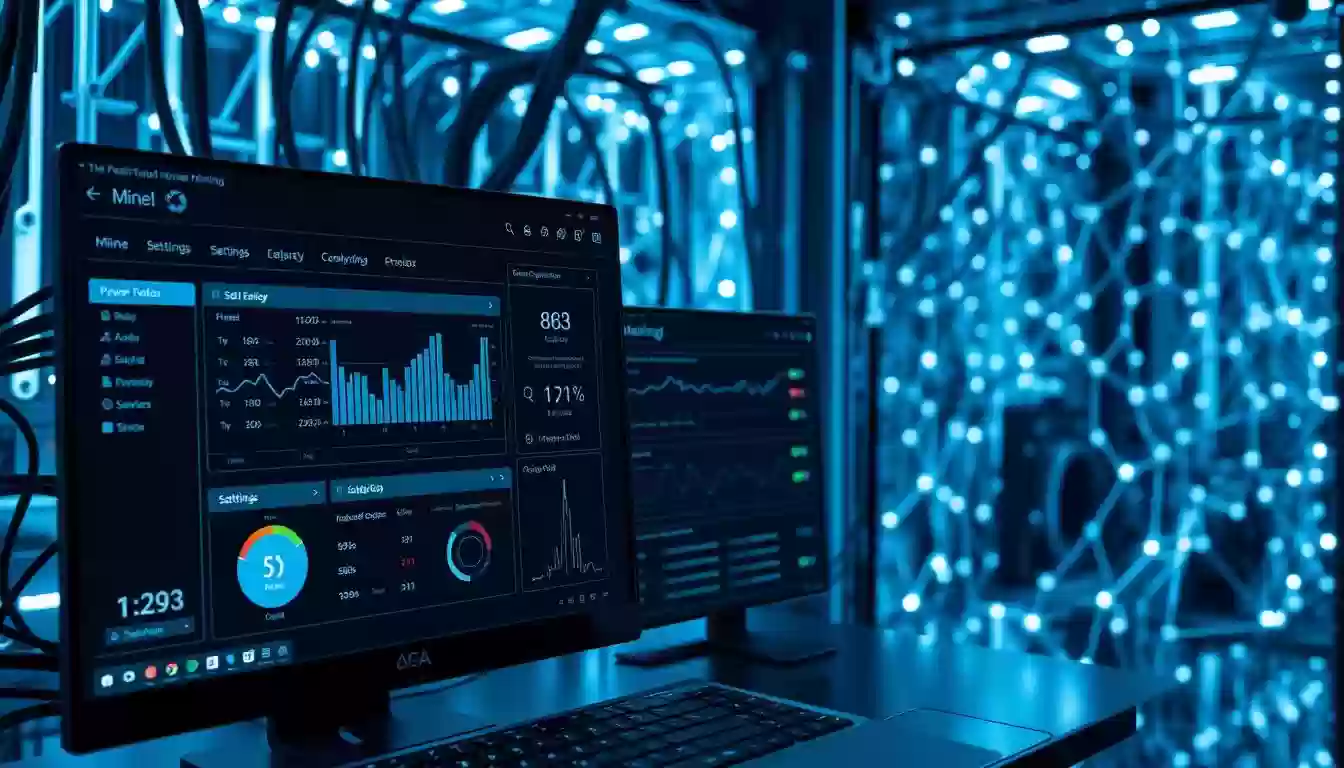
Optimizing Performance and Overclocking Your Rig
Optimizing your mining rig's performance is key to maximizing efficiency and rewards. This section will guide you through safe overclocking practices and performance-enhancing techniques.
Adjusting BIOS and Overclocking Settings
To unlock your rig's full potential, start by tweaking BIOS settings. Enable features like "Above 4G Decoding" to support multiple GPUs. Use tools like MSI Afterburner to adjust core and memory clock speeds, boosting hash rates without overloading your hardware.
| BIOS Setting | Recommended Value | Impact |
|---|---|---|
| Memory Timing | Stock or Slightly Reduced | Improves Stability |
| Core Voltage | Light Increase | Enhances Overclocking |
| Fan Speed | Higher for Cooling | Maintains Temperature |
Balancing Performance with Power Consumption
While overclocking increases performance, it also boosts power use. Use monitoring tools to track temperatures and consumption. Aim for a balance that maximizes efficiency without excessive energy costs. For example, a 10% overclock might only raise power use by 5%, offering a net gain.
By gradually adjusting settings and monitoring results, you can enhance your rig's performance while ensuring long-term stability and profitability.
Power Management and Cooling Solutions for Efficiency
Effective power management and cooling are essential for maintaining a stable and efficient mining operation. These practices not only reduce electricity costs but also prolong the lifespan of your hardware. Let’s explore strategies to manage power consumption and implement reliable cooling solutions.
Managing Electricity Costs and Power Consumption
To minimize electricity expenses, calculate your rig's power usage using the formula: Power Consumption (kWh) = Rig Wattage × Usage Time (hours) × Electricity Rate ($/kWh). For example, a 1000W rig running for 10 hours at $0.12/kWh costs approximately $12/day. Opt for high-efficiency PSUs (80 Plus Gold or Platinum) to reduce energy loss. Additionally, consider undervolting GPUs to lower power draw without significant performance loss.
Effective Cooling and Airflow Techniques
Adequate cooling prevents overheating, which can damage components. Install high-quality fans and ensure proper airflow by positioning intake and exhaust fans optimally. For high-performance rigs, liquid cooling systems offer superior temperature control. Maintain a cool operating environment, ideally below 25°C, to enhance hardware longevity.
| Cooling Solution | Effectiveness | Power Consumption |
|---|---|---|
| Case Fans | Good for basic setups | Low |
| Liquid Cooling | Excellent for high-end rigs | Moderate |
By balancing power efficiency and performance, you can create a sustainable mining operation that maximizes rewards while minimizing costs. Regular monitoring and maintenance are crucial for long-term success.
Troubleshooting Common Assembly and Setup Issues
When building a mining rig, issues like boot failures or overheating can be frustrating. Let’s explore common problems and how to fix them.
Resolving Boot and Connection Problems
A rig that won’t boot often points to power supply or motherboard issues. First, check all power cables to ensure they’re securely connected. If using a PSU with multiple rails, verify that each GPU is getting power. Next, inspect the PCIe risers and GPU connections for looseness. Re-securing these can often resolve recognition issues.
Addressing Overheating and Performance Issues
Overheating is a common issue. Ensure your case has adequate airflow by installing additional fans if necessary. Check that all coolers are functioning properly. For GPUs, tools like MSI Afterburner can help adjust fan speeds and monitor temperatures. If temperatures remain high, consider undervolting or reducing the clock speeds slightly.
| Issue | Solution |
|---|---|
| Boot Failure | Check power connections, reseat GPUs, ensure BIOS is up-to-date. |
| Overheating | Improve airflow, adjust fan settings, monitor temperatures. |
By following these steps, you can diagnose and fix common issues, ensuring your mining rig runs smoothly and efficiently.
Leveraging Hive OS and Alternative Mining Platforms
Managing multiple mining setups can be complex, but there’s a solution. Hive OS stands out as a powerful tool designed to simplify the management of your mining operations. This platform offers a user-friendly interface that centralizes control over your miners, making it easier to monitor and optimize performance.
Navigating the Hive OS Interface and Flight Sheet Setup
Hive OS provides a dashboard that displays critical metrics such as hash rates, power consumption, and temperatures. To get started, you’ll need to create a flight sheet, which defines how your miner operates. Here’s how:
- Select the cryptocurrency you want to mine.
- Choose a mining pool and input your wallet address.
- Configure your miner settings, including overclocking parameters.
Once set up, Hive OS automates fan control and monitors performance in real-time.
Exploring Other Mining Software and Platform Options
Beyond Hive OS, other notable platforms include CGMiner and BFGMiner. CGMiner is a command-line tool offering advanced customization, while BFGMiner provides a user-friendly interface for GPU and ASIC mining. Each has its strengths, so choosing the right one depends on your specific needs.
| Platform | Key Features | Best For |
|---|---|---|
| Hive OS | Centralized management, real-time monitoring, auto-fan control | Multi-rig operations |
| CGMiner | Advanced customization, remote monitoring | Experienced miners |
| BFGMiner | User-friendly interface, GPU/ASIC support | New miners |
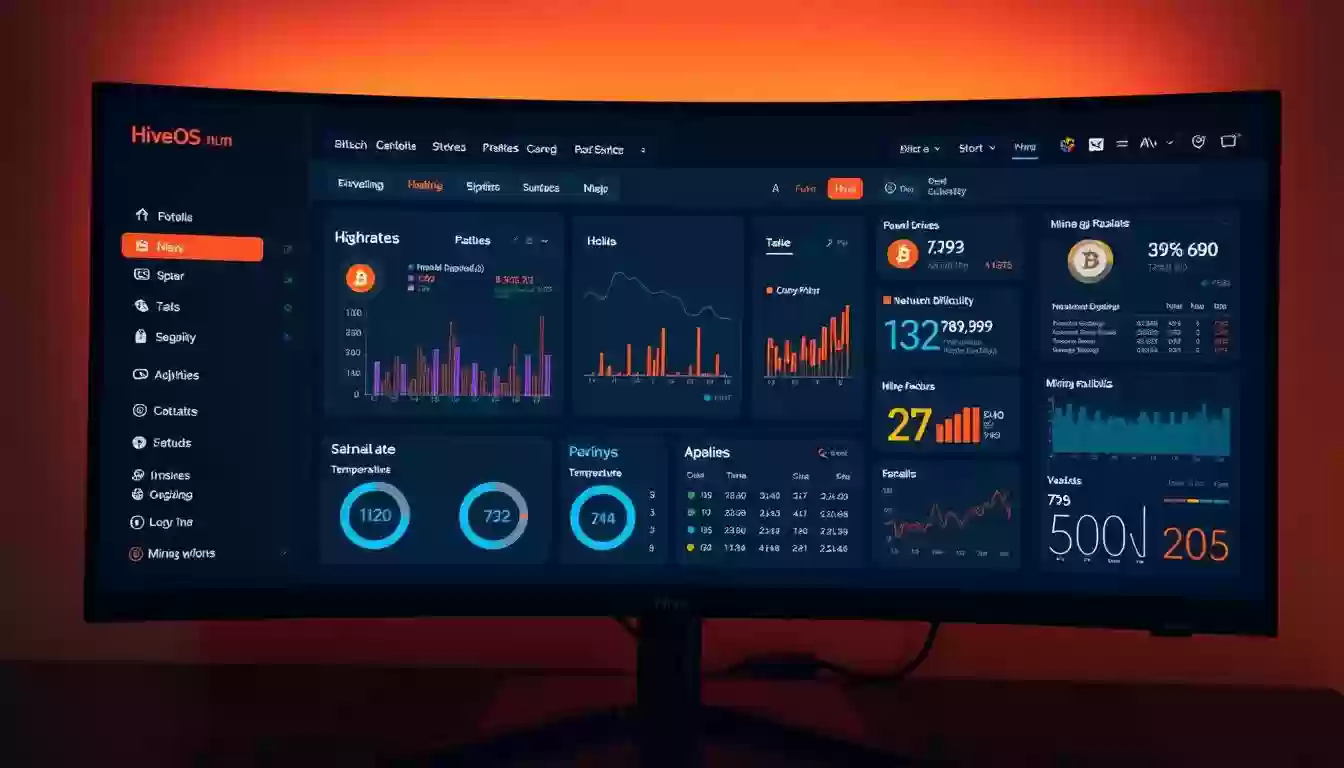
Hive OS is particularly advantageous for those managing multiple rigs, offering a unified solution that enhances efficiency and reduces the effort needed to maintain optimal mining performance.
Conclusion
Building a mining rig is a rewarding journey that combines technical expertise with strategic planning. This guide has walked you through every step, from selecting the right hardware to optimizing performance and troubleshooting common issues. By following these steps, you can create a powerful mining setup that maximizes efficiency and profitability.
Key considerations include understanding your budget, choosing the right cryptocurrency, and ensuring proper cooling and power management. Remember, mining is an evolving field, so staying informed about the latest trends and technologies is crucial for long-term success. Always monitor your power consumption and performance to ensure safety and profitability.
As you embark on your mining journey, keep in mind that this guide serves as a valuable resource for building and maintaining your setup. Embrace continuous learning and adapt to new developments in the ever-changing world of cryptocurrency. With dedication and the right approach, you can unlock the full potential of crypto mining and enjoy the rewards it offers.
FAQ
What is cryptocurrency mining?
Cryptocurrency mining is the process of validating transactions on a blockchain network to secure it and create new coins. It requires powerful hardware like ASICs or GPUs to solve complex mathematical problems.
What hardware do I need to start mining?
Essential components include an ASIC or GPU, a compatible motherboard, sufficient RAM, a reliable power supply unit (PSU), and cooling solutions like fans or liquid cooling.
How do I join a mining pool?
Joining a mining pool involves creating an account on a pool platform, configuring your mining software with the pool's details, and starting the mining process. Pools combine computational power to increase reward chances.
What mining software should I use?
Popular options include CGminer for ASICs and BFGminer for GPUs. EasyMiner and MinerGate are user-friendly choices for beginners. Always download software from official sources to ensure security.
How much electricity does mining consume?
Electricity consumption varies by hardware. ASICs and high-end GPUs consume significant power. Calculate your costs by checking your PSU's wattage and your local electricity rate.
What are common issues during setup?
Issues may include hardware detection problems, system crashes, or overheating. Ensure proper hardware installation, adequate cooling, and stable power supply to mitigate these issues.
Can I optimize my mining performance?
Yes, through overclocking or undervolting your GPUs. Use tools like MSI Afterburner to adjust settings, but monitor for stability and heat issues.
How do I choose the right cryptocurrency to mine?
Research the coin's algorithm, difficulty level, and block reward. Choose cryptocurrencies that align with your hardware capabilities for optimal results.
What is Hive OS?
Hive OS is a popular operating system for mining rigs, offering a user-friendly interface for monitoring and managing your mining operations remotely.
How do I calculate mining profitability?
Use online calculators to estimate profitability based on your hardware's hash rate, electricity costs, and the cryptocurrency's current difficulty and price.












